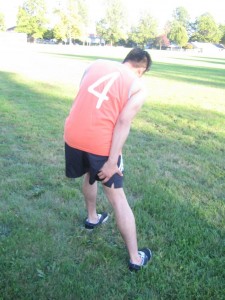Peripheral arterial disease involves limited blood flow in the arteries of the leg. Once the arteries are narrowed by plaque, the oxygenated blood that flows via the arteries could not reach the legs and feet.
https://www.youtube.com/watch?v=nCJEuoSbW-A
The presence of this condition might be an indication of a more systemic arterial ailment that can affect the brain or heart, possibly resulting to a stroke or heart attack.
What are the indications?
Generally, there are no symptoms in the initial phases of peripheral arterial disease. Oftentimes, once the symptoms are evident, the arteries are already obstructed significantly.

The usual indications include:
- Leg pain or cramping sensation that arises while walking (intermittent claudication)
- Leg discomfort or cramping that occurs when lying down
- Cold feet or legs
- Leg weakness or numbness
- Changes in the color of the leg
- Sores on the toes, legs or feet that do not heal
- Changes in the color and thickness of the toenail
- Loss of hair on the legs and feet
In case any of these symptoms are present, it is vital to consult a doctor. If not treated, peripheral arterial disease can lead to debilitating consequences that might cost a limb.
What are the risk factors?
Since only half of cases have symptoms, it is vital that individuals with risk factors are screened or tested for peripheral arterial disease.
The common risk factors include:
- Smoking
- Diabetes
- Over the age of 50
- High cholesterol
- High blood pressure
- Sedentary lifestyle
- Personal or family history of PAD, heart attack, heart disease or stroke
Management of peripheral arterial disease
The treatment for peripheral arterial disease generally includes lifestyle modifications, medications and even surgery in some cases.
- Lifestyle modifications – these include regular exercise, cessation of smoking and a heart-healthy diet
- Medications – certain drugs might be given to improve the flow of blood, prevent the formation of blood clots or control the cholesterol, blood pressure and blood glucose levels
- Surgery – in some cases, small incision procedures or open surgery of the leg are done to improve the flow of blood
